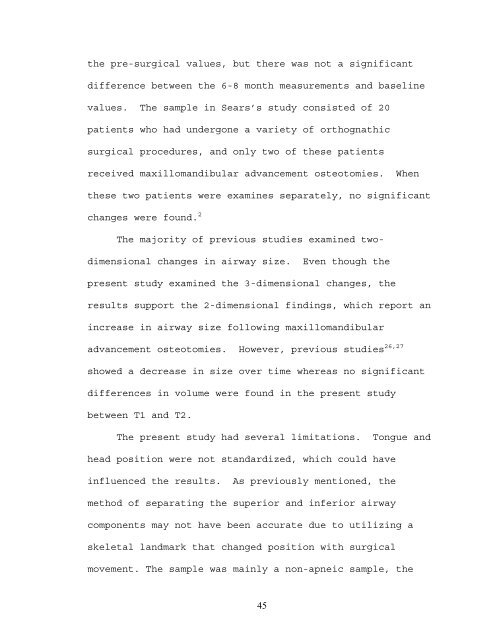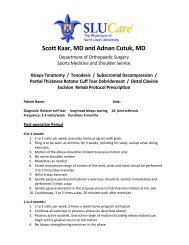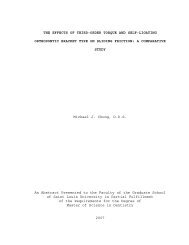PHARYNGEAL AIRWAY VOLUME FOLLOWING ...
PHARYNGEAL AIRWAY VOLUME FOLLOWING ...
PHARYNGEAL AIRWAY VOLUME FOLLOWING ...
You also want an ePaper? Increase the reach of your titles
YUMPU automatically turns print PDFs into web optimized ePapers that Google loves.
the pre-surgical values, but there was not a significant<br />
difference between the 6-8 month measurements and baseline<br />
values. The sample in Sears’s study consisted of 20<br />
patients who had undergone a variety of orthognathic<br />
surgical procedures, and only two of these patients<br />
received maxillomandibular advancement osteotomies. When<br />
these two patients were examines separately, no significant<br />
changes were found. 2<br />
The majority of previous studies examined two-<br />
dimensional changes in airway size. Even though the<br />
present study examined the 3-dimensional changes, the<br />
results support the 2-dimensional findings, which report an<br />
increase in airway size following maxillomandibular<br />
advancement osteotomies. However, previous studies 26,27<br />
showed a decrease in size over time whereas no significant<br />
differences in volume were found in the present study<br />
between T1 and T2.<br />
The present study had several limitations. Tongue and<br />
head position were not standardized, which could have<br />
influenced the results. As previously mentioned, the<br />
method of separating the superior and inferior airway<br />
components may not have been accurate due to utilizing a<br />
skeletal landmark that changed position with surgical<br />
movement. The sample was mainly a non-apneic sample, the<br />
45

















